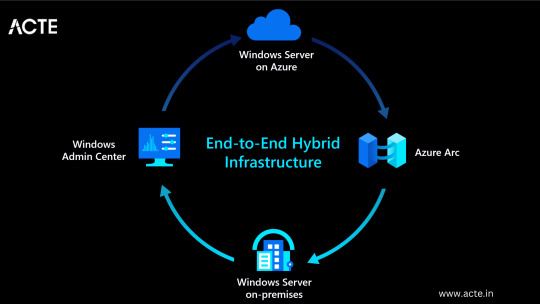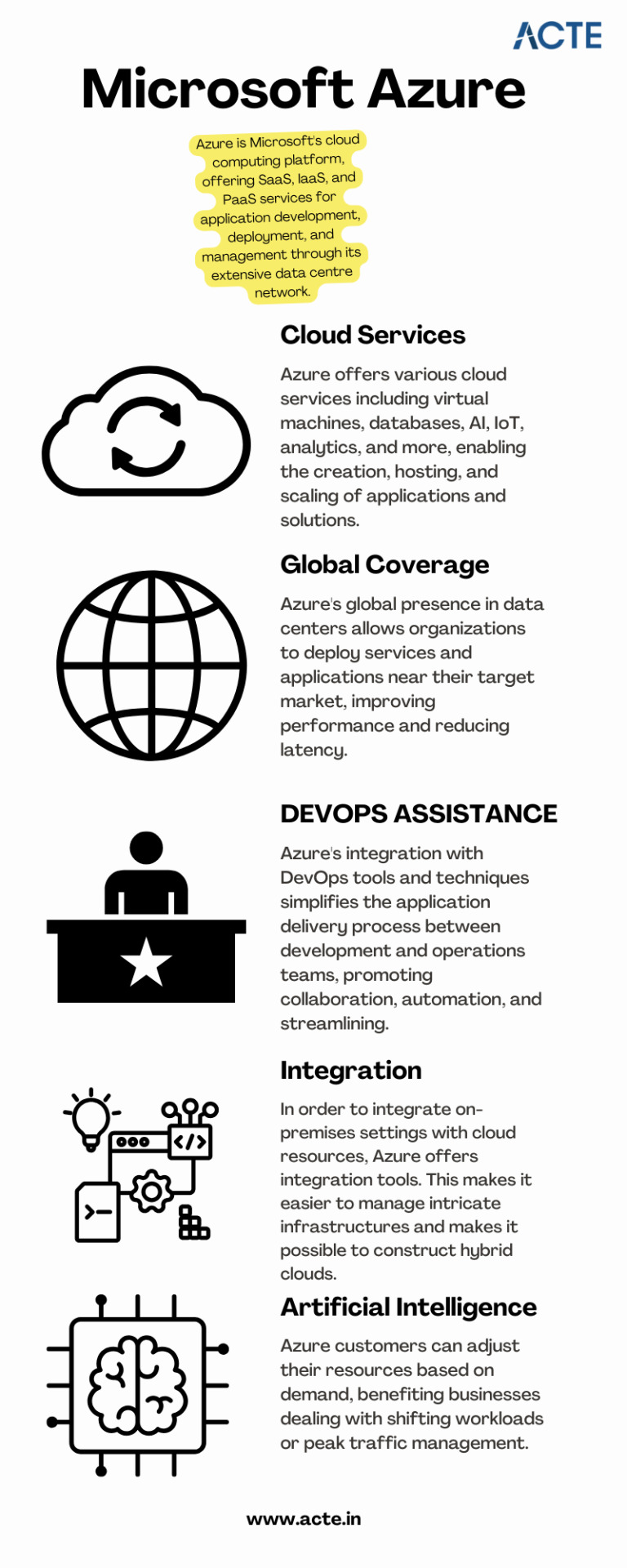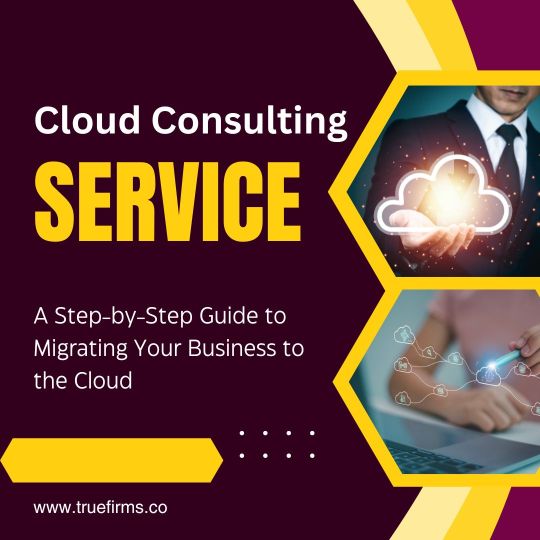#cloud computing security services
Explore tagged Tumblr posts
Text
Secure and Scalable Cloud Server Management at Atcuality
For businesses seeking to enhance scalability and maintain top-tier security, Atcuality provides unparalleled cloud server management services. Our solutions cover all aspects of cloud server maintenance, including load balancing, patch management, data backups, and disaster recovery planning. Our experienced professionals work with cutting-edge tools to ensure that your servers are secure, efficient, and scalable to meet changing business needs. Whether you operate in e-commerce, finance, or technology, we tailor our services to align with your operational goals. With Atcuality as your trusted partner, you can focus on driving growth while we handle the technical complexities of cloud management.
#seo marketing#seo services#artificial intelligence#azure cloud services#seo agency#digital marketing#seo company#iot applications#ai powered application#amazon web services#ai applications#virtual reality#augmented reality agency#augmented human c4 621#augmented and virtual reality market#augmented intelligence#augmented reality#cloud security services#cloud computing#cloud services#cloud service provider#cloud server hosting#software#devops#information technology#cash collection application#task management#blockchain#web developing company#web development
2 notes
·
View notes
Text

The Comprehensive Guide to Web Development, Data Management, and More
Introduction
Everything today is technology driven in this digital world. There's a lot happening behind the scenes when you use your favorite apps, go to websites, and do other things with all of those zeroes and ones — or binary data. In this blog, I will be explaining what all these terminologies really means and other basics of web development, data management etc. We will be discussing them in the simplest way so that this becomes easy to understand for beginners or people who are even remotely interested about technology. JOIN US
What is Web Development?
Web development refers to the work and process of developing a website or web application that can run in a web browser. From laying out individual web page designs before we ever start coding, to how the layout will be implemented through HTML/CSS. There are two major fields of web development — front-end and back-end.
Front-End Development
Front-end development, also known as client-side development, is the part of web development that deals with what users see and interact with on their screens. It involves using languages like HTML, CSS, and JavaScript to create the visual elements of a website, such as buttons, forms, and images. JOIN US
HTML (HyperText Markup Language):
HTML is the foundation of all website, it helps one to organize their content on web platform. It provides the default style to basic elements such as headings, paragraphs and links.
CSS (Cascading Style Sheets):
styles and formats HTML elements. It makes an attractive and user-friendly look of webpage as it controls the colors, fonts, layout.
JavaScript :
A language for adding interactivity to a website Users interact with items, like clicking a button to send in a form or viewing images within the slideshow. JOIN US
Back-End Development
The difference while front-end development is all about what the user sees, back end involves everything that happens behind. The back-end consists of a server, database and application logic that runs on the web.
Server:
A server is a computer that holds website files and provides them to the user browser when they request it. Server-Side: These are populated by back-end developers who build and maintain servers using languages like Python, PHP or Ruby.
Database:
The place where a website keeps its data, from user details to content and settings The database is maintained with services like MySQL, PostgreSQL, or MongoDB. JOIN US
Application Logic —
the code that links front-end and back-end It takes user input, gets data from the database and returns right informations to front-end area.

Why Proper Data Management is Absolutely Critical
Data management — Besides web development this is the most important a part of our Digital World. What Is Data Management? It includes practices, policies and procedures that are used to collect store secure data in controlled way.
Data Storage –
data after being collected needs to be stored securely such data can be stored in relational databases or cloud storage solutions. The most important aspect here is that the data should never be accessed by an unauthorized source or breached. JOIN US
Data processing:
Right from storing the data, with Big Data you further move on to process it in order to make sense out of hordes of raw information. This includes cleansing the data (removing errors or redundancies), finding patterns among it, and producing ideas that could be useful for decision-making.
Data Security:
Another important part of data management is the security of it. It refers to defending data against unauthorized access, breaches or other potential vulnerabilities. You can do this with some basic security methods, mostly encryption and access controls as well as regular auditing of your systems.
Other Critical Tech Landmarks
There are a lot of disciplines in the tech world that go beyond web development and data management. Here are a few of them:
Cloud Computing
Leading by example, AWS had established cloud computing as the on-demand delivery of IT resources and applications via web services/Internet over a decade considering all layers to make it easy from servers up to top most layer. This will enable organizations to consume technology resources in the form of pay-as-you-go model without having to purchase, own and feed that infrastructure. JOIN US
Cloud Computing Advantages:
Main advantages are cost savings, scalability, flexibility and disaster recovery. Resources can be scaled based on usage, which means companies only pay for what they are using and have the data backed up in case of an emergency.
Examples of Cloud Services:
Few popular cloud services are Amazon Web Services (AWS), Microsoft Azure, and Google Cloud. These provide a plethora of services that helps to Develop and Manage App, Store Data etc.
Cybersecurity
As the world continues to rely more heavily on digital technologies, cybersecurity has never been a bigger issue. Protecting computer systems, networks and data from cyber attacks is called Cyber security.
Phishing attacks, Malware, Ransomware and Data breaches:
This is common cybersecurity threats. These threats can bear substantial ramifications, from financial damages to reputation harm for any corporation.
Cybersecurity Best Practices:
In order to safeguard against cybersecurity threats, it is necessary to follow best-practices including using strong passwords and two-factor authorization, updating software as required, training employees on security risks.
Artificial Intelligence and Machine Learning
Artificial Intelligence (AI) and Machine Learning (ML) represent the fastest-growing fields of creating systems that learn from data, identifying patterns in them. These are applied to several use-cases like self driving cars, personalization in Netflix.
AI vs ML —
AI is the broader concept of machines being able to carry out tasks in a way we would consider “smart”. Machine learning is a type of Artificial Intelligence (AI) that provides computers with the ability to learn without being explicitly programmed. JOIN US
Applications of Artificial Intelligence and Machine Learning: some common applications include Image recognition, Speech to text, Natural language processing, Predictive analytics Robotics.
Web Development meets Data Management etc.
We need so many things like web development, data management and cloud computing plus cybersecurity etc.. but some of them are most important aspects i.e. AI/ML yet more fascinating is where these fields converge or play off each other.
Web Development and Data Management
Web Development and Data Management goes hand in hand. The large number of websites and web-based applications in the world generate enormous amounts of data — from user interactions, to transaction records. Being able to manage this data is key in providing a fantastic user experience and enabling you to make decisions based on the right kind of information.
E.g. E-commerce Website, products data need to be saved on server also customers data should save in a database loosely coupled with orders and payments. This data is necessary for customization of the shopping experience as well as inventory management and fraud prevention.
Cloud Computing and Web Development
The development of the web has been revolutionized by cloud computing which gives developers a way to allocate, deploy and scale applications more or less without service friction. Developers now can host applications and data in cloud services instead of investing for physical servers.
E.g. A start-up company can use cloud services to roll out the web application globally in order for all users worldwide could browse it without waiting due unavailability of geolocation prohibited access.
The Future of Cybersecurity and Data Management
Which makes Cybersecurity a very important part of the Data management. The more data collected and stored by an organization, the greater a target it becomes for cyber threats. It is important to secure this data using robust cybersecurity measures, so that sensitive information remains intact and customer trust does not weaken. JOIN US
Ex: A healthcare provider would have to protect patient data in order to be compliant with regulations such as HIPAA (Health Insurance Portability and Accountability Act) that is also responsible for ensuring a degree of confidentiality between a provider and their patients.
Conclusion
Well, in a nutshell web-developer or Data manager etc are some of the integral parts for digital world.
As a Business Owner, Tech Enthusiast or even if you are just planning to make your Career in tech — it is important that you understand these. With the progress of technology never slowing down, these intersections are perhaps only going to come together more strongly and develop into cornerstones that define how we live in a digital world tomorrow.
With the fundamental knowledge of web development, data management, automation and ML you will manage to catch up with digital movements. Whether you have a site to build, ideas data to manage or simply interested in what’s hot these days, skills and knowledge around the above will stand good for changing tech world. JOIN US
#Technology#Web Development#Front-End Development#Back-End Development#HTML#CSS#JavaScript#Data Management#Data Security#Cloud Computing#AWS (Amazon Web Services)#Cybersecurity#Artificial Intelligence (AI)#Machine Learning (ML)#Digital World#Tech Trends#IT Basics#Beginners Guide#Web Development Basics#Tech Enthusiast#Tech Career#america
4 notes
·
View notes
Text
A Complete Guide to Mastering Microsoft Azure for Tech Enthusiasts
With this rapid advancement, businesses around the world are shifting towards cloud computing to enhance their operations and stay ahead of the competition. Microsoft Azure, a powerful cloud computing platform, offers a wide range of services and solutions for various industries. This comprehensive guide aims to provide tech enthusiasts with an in-depth understanding of Microsoft Azure, its features, and how to leverage its capabilities to drive innovation and success.

Understanding Microsoft Azure
A platform for cloud computing and service offered through Microsoft is called Azure. It provides reliable and scalable solutions for businesses to build, deploy, and manage applications and services through Microsoft-managed data centers. Azure offers a vast array of services, including virtual machines, storage, databases, networking, and more, enabling businesses to optimize their IT infrastructure and accelerate their digital transformation.

Cloud Computing and its Significance
Cloud computing has revolutionized the IT industry by providing on-demand access to a shared pool of computing resources over the internet. It eliminates the need for businesses to maintain physical hardware and infrastructure, reducing costs and improving scalability. Microsoft Azure embraces cloud computing principles to enable businesses to focus on innovation rather than infrastructure management.
Key Features and Benefits of Microsoft Azure
Scalability: Azure provides the flexibility to scale resources up or down based on workload demands, ensuring optimal performance and cost efficiency.
Vertical Scaling: Increase or decrease the size of resources (e.g., virtual machines) within Azure.
Horizontal Scaling: Expand or reduce the number of instances across Azure services to meet changing workload requirements.
Reliability and Availability: Microsoft Azure ensures high availability through its globally distributed data centers, redundant infrastructure, and automatic failover capabilities.
Service Level Agreements (SLAs): Guarantees high availability, with SLAs covering different services.
Availability Zones: Distributes resources across multiple data centers within a region to ensure fault tolerance.
Security and Compliance: Azure incorporates robust security measures, including encryption, identity and access management, threat detection, and regulatory compliance adherence.
Azure Security Center: Provides centralized security monitoring, threat detection, and compliance management.
Compliance Certifications: Azure complies with various industry-specific security standards and regulations.
Hybrid Capability: Azure seamlessly integrates with on-premises infrastructure, allowing businesses to extend their existing investments and create hybrid cloud environments.
Azure Stack: Enables organizations to build and run Azure services on their premises.
Virtual Network Connectivity: Establish secure connections between on-premises infrastructure and Azure services.
Cost Optimization: Azure provides cost-effective solutions, offering pricing models based on consumption, reserved instances, and cost management tools.
Azure Cost Management: Helps businesses track and optimize their cloud spending, providing insights and recommendations.
Azure Reserved Instances: Allows for significant cost savings by committing to long-term usage of specific Azure services.
Extensive Service Catalog: Azure offers a wide range of services and tools, including app services, AI and machine learning, Internet of Things (IoT), analytics, and more, empowering businesses to innovate and transform digitally.
Learning Path for Microsoft Azure
To master Microsoft Azure, tech enthusiasts can follow a structured learning path that covers the fundamental concepts, hands-on experience, and specialized skills required to work with Azure effectively. I advise looking at the ACTE Institute, which offers a comprehensive Microsoft Azure Course.

Foundational Knowledge
Familiarize yourself with cloud computing concepts, including Infrastructure as a Service (IaaS), Platform as a Service (PaaS), and Software as a Service (SaaS).
Understand the core components of Azure, such as Azure Resource Manager, Azure Virtual Machines, Azure Storage, and Azure Networking.
Explore Azure architecture and the various deployment models available.
Hands-on Experience
Create a free Azure account to access the Azure portal and start experimenting with the platform.
Practice creating and managing virtual machines, storage accounts, and networking resources within the Azure portal.
Deploy sample applications and services using Azure App Services, Azure Functions, and Azure Containers.
Certification and Specializations
Pursue Azure certifications to validate your expertise in Azure technologies. Microsoft offers role-based certifications, including Azure Administrator, Azure Developer, and Azure Solutions Architect.
Gain specialization in specific Azure services or domains, such as Azure AI Engineer, Azure Data Engineer, or Azure Security Engineer. These specializations demonstrate a deeper understanding of specific technologies and scenarios.
Best Practices for Azure Deployment and Management
Deploying and managing resources effectively in Microsoft Azure requires adherence to best practices to ensure optimal performance, security, and cost efficiency. Consider the following guidelines:
Resource Group and Azure Subscription Organization
Organize resources within logical resource groups to manage and govern them efficiently.
Leverage Azure Management Groups to establish hierarchical structures for managing multiple subscriptions.
Security and Compliance Considerations
Implement robust identity and access management mechanisms, such as Azure Active Directory.
Enable encryption at rest and in transit to protect data stored in Azure services.
Regularly monitor and audit Azure resources for security vulnerabilities.
Ensure compliance with industry-specific standards, such as ISO 27001, HIPAA, or GDPR.
Scalability and Performance Optimization
Design applications to take advantage of Azure’s scalability features, such as autoscaling and load balancing.
Leverage Azure CDN (Content Delivery Network) for efficient content delivery and improved performance worldwide.
Optimize resource configurations based on workload patterns and requirements.
Monitoring and Alerting
Utilize Azure Monitor and Azure Log Analytics to gain insights into the performance and health of Azure resources.
Configure alert rules to notify you about critical events or performance thresholds.
Backup and Disaster Recovery
Implement appropriate backup strategies and disaster recovery plans for essential data and applications.
Leverage Azure Site Recovery to replicate and recover workloads in case of outages.
Mastering Microsoft Azure empowers tech enthusiasts to harness the full potential of cloud computing and revolutionize their organizations. By understanding the core concepts, leveraging hands-on practice, and adopting best practices for deployment and management, individuals become equipped to drive innovation, enhance security, and optimize costs in a rapidly evolving digital landscape. Microsoft Azure’s comprehensive service catalog ensures businesses have the tools they need to stay ahead and thrive in the digital era. So, embrace the power of Azure and embark on a journey toward success in the ever-expanding world of information technology.
#microsoft azure#cloud computing#cloud services#data storage#tech#information technology#information security
6 notes
·
View notes
Text
Secure Media Storage Services for Business Continuity

Intelics offers comprehensive MEDIA STORAGE SERVICES designed to safeguard your organization's critical data assets. Our solutions encompass secure tape media vaulting, rotation, transcription, and certified destruction services. With state-of-the-art facilities featuring fire-rated vaults, climate control, and 24/7 surveillance, we ensure the integrity and availability of your physical media. Trust Intelics to provide reliable, compliant, and efficient media storage solutions tailored to your business needs.
0 notes
Text
Come look at all the crazy methods no one has thought of until now.
#Cloud#Cloud computing#cloud security#cyber#cyber attack#cyber security#cyber threat#hackers#hacking#malware as a service
0 notes
Text
#cloud services#devops solutions#cloud computing#infrastructure automation#CI/CD pipeline#cloud and devops services#cloud migration#enterprise devops#cloud security#cloud-native development#cloud deployment services#continuous delivery#cloud consulting services#managed cloud services#devops consulting company#hybrid cloud solutions#cloud optimization#instep technologies
0 notes
Text
#cloud solutions for growing businesses#cloud computing for growing businesses#iclimb systems india private limited#iclimb website#cloud computing services#cloud computing companies#best cloud service provider#cloud computing security#best cloud computing services
0 notes
Text
ZeaCloud Private Cloud – Scalable, Secure Cloud Infrastructure in India
ZeaCloud Private Cloud offers a secure, fully managed Infrastructure-as-a-Service (IaaS) designed for enterprises that need full control, data privacy, and high performance. Built on dedicated infrastructure, it ensures 99.9% uptime, enterprise-grade security, and seamless scalability. Ideal for businesses in finance, healthcare, and IT, ZeaCloud empowers digital transformation with customizable, compliant cloud solutions supported 24/7. for more detail, visit: ZeaCloud-Private Cloud
#best server solution provider in delhi ncr#private cloud#IaaS India#secure cloud hosting#enterprise cloud services#Zeacloud#best cloud computing service provider#server solution provider
0 notes
Text
How Cloud Migration Services are Reshaping Business Operations
Cloud Migration Services Market: Trends, Growth, and Forecast
The Cloud Migration Services Market is witnessing significant growth as businesses increasingly adopt cloud-based solutions to enhance efficiency, scalability, and cost-effectiveness. As organizations strive to modernize their IT infrastructure, the demand for seamless and secure cloud migration services continues to rise.
Request Sample PDF Copy:https://wemarketresearch.com/reports/request-free-sample-pdf/cloud-migration-services-market/996
Cloud Migration Services Market Size and Share
The Cloud Migration Services Market Size is expanding rapidly, driven by the increasing need for enterprises to move their workloads, applications, and data to the cloud. The market is segmented based on service types, deployment models, enterprise sizes, and industries. With the growing adoption of hybrid and multi-cloud strategies, the Cloud Migration Services Market Share is being distributed across major cloud service providers such as AWS, Microsoft Azure, and Google Cloud Platform.
Cloud Migration Services Market Growth and Trends
The Cloud Migration Services Market Growth is fueled by various factors, including digital transformation initiatives, cost savings, improved security measures, and enhanced operational efficiency. Enterprises are leveraging AI and automation in cloud migration processes, further accelerating adoption rates. Among the key Cloud Migration Services Market Trends, hybrid and multi-cloud deployments are gaining momentum as businesses seek flexibility and risk mitigation strategies.
Key Drivers of Market Growth
Several factors are propelling the growth of the cloud migration services market:
Adoption of Hybrid Cloud Solutions: Organizations are increasingly implementing hybrid cloud strategies to optimize workloads, enhance data management, and reduce operational costs.
Need for Business Agility: The demand for rapid and streamlined application deployment through pay-as-you-go models has made cloud migration services essential for modern business strategies.
Implementation of Automation Solutions: The growing adoption of automation tools in cloud migration processes reduces manual intervention, accelerates time-to-value, and ensures compliance.
Market Segmentation
The cloud migration services market can be segmented based on service type, deployment model, organization size, application, and vertical:
Service Type: Includes automation, integration, disaster recovery, application hosting and monitoring, DevOps, training and consulting, support and maintenance.
Deployment Model: Comprises public, private, and hybrid clouds.
Organization Size: Caters to both large enterprises and small and medium-sized enterprises (SMEs).
Application: Encompasses project management, infrastructure management, security and compliance management, among others.
Verticals: Serves various sectors such as banking, financial services, and insurance (BFSI), healthcare and life sciences, telecommunications and ITES, manufacturing, retail, and entertainment.
Cloud Migration Services Market Price and Potential
The Cloud Migration Services Market Price varies based on factors such as migration complexity, the volume of data, customization requirements, and additional security features. Enterprises are investing in cloud migration services to reduce operational expenses and improve system performance. The Cloud Migration Services Market Potential remains vast, with small and medium-sized enterprises (SMEs) increasingly adopting cloud migration strategies to compete with larger enterprises.
Cloud Migration Services Market Forecast and Analysis
The Cloud Migration Services Market Forecast suggests continued expansion, with a projected compound annual growth rate (CAGR) in the coming years. The market's upward trajectory is supported by increased cloud adoption across industries, advancements in cloud technologies, and the rising need for remote work solutions. A comprehensive Cloud Migration Services Market Analysis indicates that North America and Europe hold a dominant position, while the Asia-Pacific region is emerging as a key growth market due to rapid digitization efforts.
Competitive Landscape
The cloud migration services market is characterized by the presence of major players such as Accenture PLC, IBM Corporation, Amazon Web Services Inc., Cisco Systems Inc., and Microsoft Corporation.
These companies are continually innovating and expanding their service offerings to cater to the evolving needs of businesses undergoing cloud transformation.
Future Outlook
The cloud migration services market is poised for continued growth, driven by technological advancements, increasing adoption of hybrid and multi-cloud strategies, and the rising need for business agility and automation. As organizations continue to prioritize digital transformation, the demand for efficient and secure cloud migration services is expected to escalate, offering significant opportunities for service providers in this dynamic market.
Regional Insights
North America holds a significant share of the cloud migration services market, attributed to its advanced technological infrastructure and mature IT landscape. The region's businesses leverage cloud solutions to gain enhanced flexibility, scalability, cost efficiency, and business continuity.
Other regions, including Europe and Asia-Pacific, are also witnessing substantial growth due to increasing digital transformation initiatives and cloud adoption.
Related Report:
Fraud Detection and Prevention Market:
https://wemarketresearch.com/reports/fraud-detection-and-prevention-market/1114
Video Conferencing Market:
https://wemarketresearch.com/reports/video-conferencing-market/929
Conclusion
The Cloud Migration Services Market is poised for substantial growth as businesses increasingly rely on cloud-based solutions. With evolving Cloud Migration Services Market Trends, enterprises are embracing hybrid and multi-cloud approaches, automation, and AI-driven migration tools. As the demand for cloud migration services rises, organizations must stay informed about Cloud Migration Services Market Analysis and forecasts to make strategic decisions that align with their digital transformation goals.
#Cloud Migration#Cloud Computing#Cloud Services#Cloud Transformation#Cloud Adoption#Digital Transformation#Cloud Infrastructure#Cloud Strategy#IT Modernization#Enterprise Cloud Solutions#Hybrid Cloud#Public Cloud#Private Cloud#Multi-Cloud#Cloud Security#Cloud Cost Optimization#Cloud Service Providers#Cloud Migration Tools#Cloud Integration#Data Migration#Cloud Scalability
0 notes
Text

Looking for the best cloud service providers in Pune? Get secure, scalable, and efficient cloud solutions tailored to your business needs. Whether it's cloud hosting, storage, or security, we’ve got you covered. Choose Scalar Techhub for top-notch cloud services and seamless digital transformation!
Get a Free Quote! 📲+91-9975486861 📧[email protected]
For more details, visit https://www.scalartechhub.com/
#Cloud Services#Pune IT#Scalar Tech hub#Digital Solutions#Cloud Computing#Business Growth#IT Solutions#Secure Cloud#Tech Innovation#Cloud Hosting
1 note
·
View note
Text
0 notes
Text
Storage Predictions for 2025: Larry O’Connor Explores the Future of Data Management
New Post has been published on https://thedigitalinsider.com/storage-predictions-for-2025-larry-oconnor-explores-the-future-of-data-management/
Storage Predictions for 2025: Larry O’Connor Explores the Future of Data Management


In this article by Larry O’Connor for LarryJordan.com, the founder and CEO of OWC shares his insightful predictions for the future of data storage in 2025. Highlighting the return to on-premises solutions, the democratization of AI through local implementation, and the growing performance gap between local and cloud-based systems, O’Connor provides a roadmap for businesses to optimize their storage strategies. These predictions focus on enhancing security, improving performance, and reducing costs—key considerations for data management in the digital era.
The Return of On-Premises Data Storage and Computing
O’Connor predicts a major resurgence in on-premises data storage and computing as organizations prioritize security, performance, and cost control. With cloud storage costs on the rise and vulnerabilities becoming more apparent, many businesses are turning to local solutions for critical data management. On-prem data storage offers faster access speeds, greater reliability, and enhanced protection against cyberattacks.
Smaller businesses, in particular, benefit from local storage since it is less attractive to cybercriminals compared to public cloud platforms. O’Connor emphasizes that the cloud should play a supporting role—serving as a tertiary backup or for external data sharing—while local solutions remain the primary strategy for data security. By reducing reliance on cloud storage, businesses can avoid bandwidth costs, accelerate data recovery, and maintain control over sensitive information.
On-Premises AI: Democratizing Technology and Protecting Intellectual Property
One of the most exciting predictions from O’Connor is the rise of on-premises AI. This shift enables smaller businesses to access powerful data processing tools without the high costs associated with cloud-based AI platforms. Running AI systems locally not only democratizes advanced technology but also protects proprietary data, algorithms, and customer insights from being exposed in the cloud.
O’Connor warns of the risks of “data bleed,” where proprietary information inadvertently enhances third-party systems or becomes accessible to competitors. On-prem AI ensures full control over sensitive data while eliminating recurring costs associated with cloud AI services. This makes on-premises AI a cost-effective and secure option for businesses looking to leverage AI capabilities.
The Expanding Performance Gap Between Local and Cloud-Based Systems
O’Connor’s third prediction underscores the growing performance gap between locally operated systems and cloud-dependent solutions. With advancements like Thunderbolt 5 technology, local systems now achieve data transfer speeds of up to 7000MB/s, far surpassing the 100MB/s typical of cloud-based systems.
This dramatic performance boost is essential for tasks such as video editing, high-resolution imagery processing, and managing complex data sets. By leveraging local systems, businesses can streamline workflows and significantly reduce the time and cost associated with cloud dependency. O’Connor suggests that cloud storage is best reserved for distribution and collaboration, while local solutions should handle performance-intensive tasks.
Conclusion: Embracing a Hybrid Storage Strategy
Larry O’Connor’s predictions for 2025 highlight a pivotal shift in data management strategies. Businesses are advised to embrace on-premises solutions for their speed, security, and cost advantages while using cloud services selectively for supplementary needs. Whether it’s safeguarding intellectual property, optimizing performance, or reducing expenses, on-premises storage and computing are poised to take center stage in the future of data management.
For organizations looking to stay ahead of the curve, O’Connor’s insights provide a clear path to success. By adopting a hybrid approach to data storage, businesses can harness the best of both local and cloud technologies, ensuring they remain competitive in an evolving digital landscape.
Read the full article by Larry O’Connor HERE
Learn more about OWC below:
#2025#ai#AI platforms#AI systems#Algorithms#approach#Article#backup#Best Of#CEO#Cloud#Cloud AI#cloud services#cloud storage#Collaboration#computing#Cyberattacks#cybercriminals#data#Data Management#data processing#data recovery#data security#data sharing#data storage#data transfer#democratization#democratization of AI#Editing#focus
0 notes
Text
Data Management & Governance in Digital Transformation: Insights from Dr. Imad Syed Live Podcast | PiLog Group
In the thought-provoking live podcast, “Data Management & Governance in Digital Transformation | Dr. Imad Syed Live Podcast”, Dr. Imad Syed dives deep into the critical role of data governance in shaping business success and shares actionable strategies for organizations to effectively manage their data ecosystems.
Watch the Full Podcast Here:
Why Data Governance is Critical in Digital Transformation
Ensures Data Accuracy & Integrity: Reliable data is the foundation of informed decision-making.
Enhances Compliance: Meet regulatory standards and avoid costly fines with proper governance frameworks.
Strengthens Data Security: Prevent breaches and unauthorized access through robust governance strategies.
Improves Data Usability: Organized data ensures stakeholders can extract valuable insights effortlessly.
Supports Scalability: Well-structured data systems grow seamlessly with your business.
Key Highlights from the Podcast:
Understanding Data Governance Frameworks: Learn the essential components of effective governance models.
Overcoming Data Management Challenges: Address common obstacles like data silos, duplication, and inconsistency.
Best Practices for Digital Transformation: Discover proven strategies for integrating data management in digital initiatives.
Building a Data-Driven Culture: Foster a mindset where every team member values data accuracy and security.
Future Trends in Data Governance: Stay ahead with insights into emerging technologies and methodologies.
Gain Expert Insights Now: Watch the Podcast Here
Who Should Watch This Podcast?
C-Level Executives: Understand how strategic data management drives business success.
IT Professionals: Learn how to implement secure and efficient data governance frameworks.
Data Analysts: Extract meaningful insights from well-governed data structures.
Business Leaders: Align digital strategies with strong data governance policies.
Students & Educators: Gain valuable knowledge about real-world data governance applications.
Best Practices for Effective Data Governance in Digital Transformation
Establish Clear Governance Policies: Define data access, usage, and security protocols.
Invest in Advanced Tools: Leverage modern data governance platforms for efficiency.
Train Your Teams: Build awareness about data privacy and compliance across all departments.
Adopt Data-Driven Decision Making: Empower teams with reliable, real-time insights.
Measure & Refine: Regularly evaluate governance strategies and make necessary adjustments.
How Effective Data Management Powers Digital Transformation
Faster Innovation Cycles: Data-driven insights accelerate product development and deployment.
Stronger Customer Relationships: Personalized data-driven experiences improve customer satisfaction.
Operational Efficiency: Streamlined data processes reduce waste and optimize resources.
Enhanced Decision-Making: Reliable data fosters confident, informed decisions.
Scalable Business Growth: Strong governance supports sustainable expansion across industries.
Why You Should Watch This Podcast?
In this engaging live session, Dr. Imad Syed shares profound insights into how data governance and management are reshaping industries in the digital age. Whether you’re navigating digital transformation, enhancing your data systems, or setting up governance policies, this podcast offers actionable knowledge you can implement immediately.

Don’t Miss Out — Watch Now: Data Management & Governance in Digital Transformation | Dr. Imad Syed Live Podcast
Let us know your thoughts in the comments below. How is your organization leveraging data governance in its digital transformation journey?
#data management#data governance#digital transformation#drimadsyed#piloggroup#data scientist#big data#data analytics#datadriven#dataengineering#data#business intelligence#cloud computing#cybersecurity#data security#eric kimberling#data management services#data management solutions#data governance services#data governance solutions#pilog group podcast#dr. imad syed podcast#youtube
1 note
·
View note
Text
How to Choose the Right Cloud Service Provider for Your Business

Selecting the right cloud service provider is one of the most critical decisions in your migration journey. This blog highlights the key factors to consider when evaluating providers like AWS, Microsoft Azure, and Google Cloud. Learn how pricing structures, features, scalability options, and security measures differ between providers. We also discuss compliance standards, SLAs, and customer support, helping you make an informed decision. A reliable cloud provider can ensure your migration is smooth, secure, and aligned with your long-term goals. Whether you’re new to cloud computing or looking to switch providers, this guide will simplify your decision-making process.
Read more:
A Step-by-Step Guide to Migrating Your Business to the Cloud
#cloud computing#cloud services#cloud security#cloudcloud infrastructure#cloud infrastructure#cloud infrastrasture#cloud migration
0 notes
Text
Fusion Factor Corporation provides reliable IT solutions and support for small and medium-sized businesses. They specialize in managed IT services, cybersecurity, cloud solutions, and IT consulting, helping companies work smarter and stay secure.
With a focus on customer care, Fusion Factor ensures your technology runs smoothly, so you can focus on growing your business. Their team offers 24/7 monitoring, proactive support, and tailored solutions to meet your unique needs. Fusion Factor makes IT simple, so you can achieve more.
#cybersecurity#data recovery#it consulting#it services#it support#seo services#virtualization services#voip#managed it services#cyber security#cloud computing#Virtualization Services#Dark Web Monitoring Services#Office 365 Data Backup#IT Help Desk Services#Hardware As A Service#Office 365#Email & Spam Protection#On-Demand Services#Office Moves#Regulatory Compliance
0 notes
Text
#web development service#e commerce website development service#web development company#web app development services#web and mobile app development services#it management service#it management solutions#it infrastructure management services#it service management consulting#it service operations management#cyber security service#cyber security company#cyber security solution#cyber security service provider#cyber security consultation#cloud computing services#cloud computing companies#best cloud service provider#cloud computing security#best cloud computing services#iot services#iot solutions#iot development services#iot software development#iot network solutions#hr services#staffing service provider#hr recruitment solutions#hr services company#staffing solutions provider
0 notes